In case you missed the fact, Monday is Valentine’s Day, and the day means a movie, this year—well, you’re kind of out of luck. Or you’re not exactly choosy. First of all, let’s make one thing perfectly clear—no matter what it’s title may imply, there is no way in hell that Blue Valentine is a good idea for this purpose. (I’m assuming you aren’t wanting to break up, mind you.) That leaves you with what? Adam Sandler and Jennifer Aniston in Just Go with It? This duo doesn’t exactly spell romance to me.
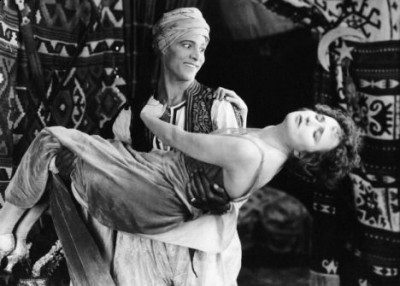
With this in mind, I’m going to throw out a variety of different kinds of romantic movies that you might consider as alternatives. Romantic movies come in a wide array of flavors, and what constitutes as romance depending on era. I mean back in 1921 it was considered romantic when Rudolph Valentino kidnapped and raped Agnes Ayres in The Sheik—and it was even more OK when it turned out that he was really a white guy and not an Arab. Even in 1939, it was all romantic for Clark Gable to carry Vivien Leigh up those stairs and force his attentions on her in Gone with the Wind, but, hey, they were married, and just look how happy she was the next morning. And, no, I am not recommending these movies.
Usually, when someone says “romantic movie” to me, the first thing I think of is Tay Garnett’s One Way Passage (1932) starring William Powell and Kay Francis. This is a film that comes under the heading of the “Tragic Romance,” and they don’t come much more tragic. The film was written by Wilson Mizner and Joseph Jackson (from a story by Robert Lord and with an assist from Garnett). Mizner is one of Hollywood’s more fascinating dilletantes. He only worked in films sporadically—most notably toward the end of his life (he died at the age of 56 in 1933)—and a great deal of his fame rests in other areas.
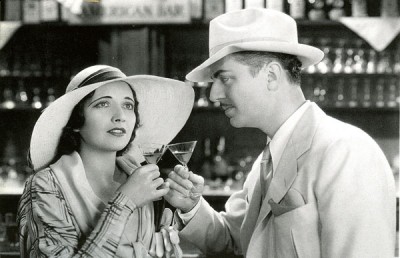
Mizner was a gadabout and raconteur, who didn’t much like Hollywood. (He once supposedly claimed that working for Warner Bros. was “like f**king a porcupine—it’s a hundred pricks against one.”) His brother was the famous—and famously eccentric—Florida archiect Addison Mizner, and it can be said that Wilson tried his hand at land development in the “Sunshine State,” too, but on a less upfront basis. Put bluntly, he was pretty much a con-man. (He once nearly talked the city of Palm Beach into digging up their royal palms—which he then planned to use for his own development.) That’s not surprising, since he also had a tendency to become romantically involved with rich women and manage to get them to pay him off to leave. That he should co-author a wildly romantic screenplay seems unlikely. Yet he did. Considering that the story of One Way Passage concerns Dan (William Powell), a convicted murderer on his was back to America for execution, and Joan (Kay Francis), a socialite dying from a heart condition on her way home to die, it’s odd that both Mizner and his co-writer would be dead less than a year after the movie came out.
Grim as the basic storyline may sound, One Way Passage isn’t in the least a dreary experience, being more romantic than tragic. The charm of the leads has much to do with it, but the overall tone is even more responsible. The film has the sense of the ethereal about it—established early on and attested to at the end by smashed cocktal glasses with their stems crossed in a bonding ritual. It suggests love that transcends earthly bonds. Sure, it’s meant to draw a tear or two or more, but not in a depressing way. It helps that the film includes two generally comedic characters—the invariably drunk pickpocket Skippy (Frank McHugh) and the sympathetic con-woman “Barrelhouse” Betty (the always wonderful Aline MacMahon). Hard to find, though it has been put out on DVD as one of the Warner Archive titles.
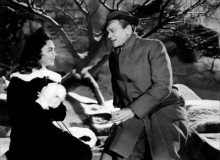
If tragic isn’t your sort of thing, there’s always the flat-out “Mystical Romance.” Nowhere is that better illustrated than in William Dieterle’s Portrait of Jennie (1948)—quite possibly the most utterly romantic movie ever made. It’s a close-to-perfect blend of stylization and unabashed romance of the fatalist and fantasy kind. With a dose of artistically textured overlays, an effective musical score (almost entirely cribbed from Debussy, a perfect cast, impeccable effects, some tinted scenes, and one Technicolor shot, there’s nothing quite like it anywhere. Fortunately, the DVD beautifully retains every aspect of the film—except that it can’t duplicate the size of the storm sequence, which, in its original engagements, were magnified on a larger screen (you can see where the pause for the changeover was).
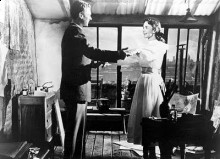
Portrait of Jennie tells the story of Eben Adams (Joseph Cotten), a struggling—and unformed—artist in Depression era New York, who meets a young girl, Jennie Appleton (Jennifer Jones), in Central Park. Jennie is a strange girl who seems to be from another time, but her look provides Adams with just the inspiration he needs to unlock his true artistic calling. Stranger still, Jennie appears to be a little older each time he sees her—claiming she’s growing up in a hurry for him—but he doesn’t really suspect anything is wrong till she tells him about her parents just being killed in an accident at the theater where they perform—an accident that took place years and years earlier in a theater long since gone. All this is leading to a romance (when Jennie is 18) and a revelation that isn’t hard to guess. But guessing the revelation has nothing to do with the effectiveness of the movie.
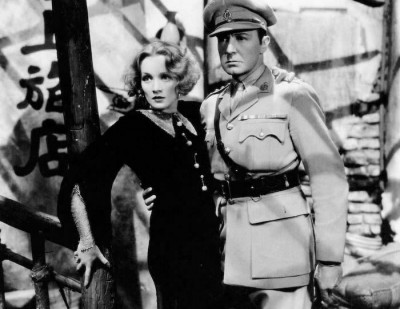
OK, if this is all a little too ethereal and transcendent for you, you might want to consider the “Ironic Romance.” Unfortunately, the title I would most suggest for this is Josef von Sternberg’s Shanghai Express (1932) with Marlene Dietrich and Clive Brook. The problem with this is that while it was put out on VHS and laserdisc, its only DVD incarnation—unless you recorded it yourself off TCM—is a Region 2 disc from Great Britain. (Universal tends to be more adventurous with its UK releases.) That’s particularly unfortunate, because a strong case can be made for the film as Sternberg’s greatest work.
The premise of the film is a kind of pulp adventure tale about passengers on a train being taken hostage by a Chinese warlord and held for ransom in order to swap for his arrested second-in-command. It’s functional and allows the film to amass a cross-section of characters in the confined space of a train—and the station where they’re held. But the center of the film is the romance between “Shanghai Lily” (Dietrich) and Dr. Donald Harvey (Brook). The two had been lovers years before, but the romance came crashing down when she refused to prove her innocence involving another man if he can’t simply take her on faith. In the meantime, she’s become “the notorious white flower of China” (“It took more than one man to change my name to ‘Shanghai Lily’.”)
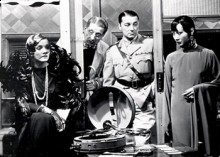
Of course, they’re both really still in love with each other, something that Sternberg observes in a cynical manner as a series of games and poses—with Dietrich always taking the upper hand. But Sternberg either can’t, or won’t bring himself to utterly reject the romance of it all, despite the fact that the two characters have to be pushed completely into a corner to actually admit to any sort of feelings at all. At the end, it’s true that Dietrich literally takes a price tag off Brook and in a very suggestive move takes his riding crop away from him, but somehow—for all its mocking tone and deliberately ludicrous dialogue (“What good is a watch without you?”), and Sternberg’s insistence on a strange, flat delivery of the lines (“This is the Shanghai Express,” he told Brook, “Everybody must talk like a train”)—it’s ultimately and gloriously romantic.

Unfortunately, there’s nothing really like it—apart from Sternberg’s The Devil Is a Woman (1935), which is a film that makes more sense if you’ve seen the Sternberg-Dietrich movies that lead up to it—but after giving the matter some thought, I believe there’s a weird similarity in the deadpan playing to be found in Wes Anderson’s The Royal Tenenbaums (2001). This tone is particularly notable as concerns the long-denied and thwarted love between Margot (Gwyneth Paltrow) and her adoptive brother Richie Tenenmbaum (Luke Wilson). It certainly lacks the glorious Hollywood romanticism of the Sternberg, but there’s something there—maybe it’s the romantic under the absurd—that feels not wholly dissimilar.
If that’s not quite suitable, but you still want something out of the ordinary and are a genre fan, how about a horror movie with a romance. Now, generally speaking the romances in horror movies are either perfunctory, or downright goopy. Often as not, the hero in horror pictures is ineffectual. In some cases, he’s downright counterproductive. Consider, for instance, David Manners in The Black Cat (1934). He spends two stretches of the climax unconscious, and then gets up just in time to shoot the wrong man. Not exactly a figure of romance, but two notable exceptions occur to me.
The first “Horror Movie Romance” that comes to mind that manages to overcome the usual run of things is that of Roger Penderel (Melvyn Douglas) and Gladys DuCane—nee Perkins (Lillian Bond) in James Whale’s The Old Dark House (1932). This is actually kind of an odd place to find such a thing, since the heroine’s in Whale’s horror pictures are usually on the insipid side—with a tendency towards gooey idealization. (As a friend of mine remarked many years ago, “Let’s face it, heterosexual romance was something Whale knew bugger-all about.”) This is different, however, thanks in no small part to the film’s source novel by J.B. Priestley.
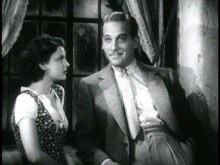
Penderell is not your average horror hero. He’s the British equivalent of one of Hemmingway’s “lost generation” characters—a survivor of WWI, which in British terms is even more grim, since so very many of that generation from there did not survive. He is as he describes himself “the man with twisted smile.” He’s sarcastic and cynical and doesn’t believe in anything other than making wry comments. That changes when he meets Gladys DuCane, a chorus girl who’s the paid companion of Sir William Porterhouse (Charles Laughton). (I should note that the film makes it clear that her companionship doesn’t involve sex.) Her name isn’t really DuCane, but Perkins. (In the book, it’s Hotchkiss, which is intereting because two years later, Whale—who must have had it in for someone named Perkins—dragged the name Perkins in to make fun of again in One More River.)
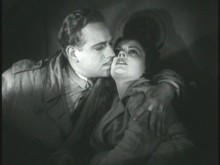
Penderel feels immediately protective of her—in part, it seems, because of a class consciousness attitude. His traveling companions—the Wavertons (Raymond Massey and Gloria Stuart)—are very upper class and proper. Pendrerel’s class is never made clear, but the overall feeling is that he—like Whale—is of the self-made man variety, who has attained a veneer of upper class sophistication. Now, Whale pretended all sorts of fantasticated nonsense about his working class background, but it’s impossible to note that his films always take the side of the working class and sense something corrupt in the upper and middle class. Penderel and Gladys appear to be a fortuitous meeting of two posers, who are comfortable enough with each other to be themselves. They’re also the most human characters in the film, and their romance is refreshing, honest, and touching.
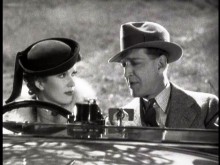
On the other hand, we have Dr. Jeffrey Garth (Otto Kruger) and his assistant Janet Blake (Marguerite Churchill) in Lambert Hillyer’s Dracula’s Daughter (1936). The 50-year-old Kruger and the 25-year-old Churchill might seem an odd pairing on paper, but in the film they really work. Not only is Kruger an intelligent change-of-pace for a leading man, but Churchill manages to be both attractive and convey the sense of being Kruger’s intellectual equal. Better still, the film shows evidence of the gothic horror film making a strong effort to reinvent itself with the times by incorporating elements of screwball comedy throughout and with nearly all the scenes involving the romantic leads written in that format. (Where this might have lead we’ll never know, since the studio put the kibosh on horror pictures immediately after this one.) It makes for a kind of screwball romantic comedy horror movie.
Assuming that you might be wanting something a little more traditional, let’s consider the “Classic Romantic Comedy.” Having given this some thought, I might suggest George Cukor’s Holiday (1938) with Cary Grant and Katharine Hepburn. While I have a personal preference for Ann Harding in the Hepburn role in the 1930 film, I can lose Harding for having Grant in the remake. (Plus, the 1930 version—presumably because RKO owns the film, while Columbia owns the material because of the remake—is almost never shown.) The 1928 Philip Barry play from which both films are derived is virtually a template for the romantic comedy.

The story follows Johnny Case (Grant), a young man with some unorthodox ideas about life, who finds himself in love with socialite Julia Seton (Doris Nolan). Or so he thinks. He hasn’t reckoned on the fact that his ideas about life might not be shared by his fiancee, nor has he mer her sister, Linda (Hepburn). Linda’s ideas about life have far more in common with Johnny’s—and she’s a far more appealing character. Of course, the audience has recognized Linda as the better match from reel one, though the only member of the cast who immediately sees this is the girls’ perpetually drunken brother, Ned (Lew Ayres), an interesting character in himself, who many have read (possibly correctly) as a repressed homosexual. Johnny’s own friends, Nick (Edward Everett Horton, who originated the role on Broadway and played it in both films) and Susan Potter (Jean Dixon) also see the score when they enter the proceedings. Naturally, it takes Johnny and Linda the whole movie to realize it. Romance, especially in the movies, is like that.
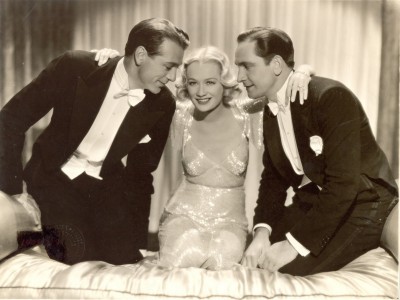
Now, if there’s anybody in—shall we say—a more complex romance, there’s always the “Unconventional Romance,” and for that we have Ernst Lubitsch’s film of Noel Coward’s Design for Living (1933). This film version of the play essentially jettisons everything but the basic premise of Coward’s play (the play opens with the scene the movie gets around to about the two-third mark). In fact, screenwriter Ben Hecht once boasted that he left only one line of Coward’s intact. Personally, I think he and Lubitsch improved on the original. In essence, it’s a flm about the perfect couple—except there are three people involved, playwright Tom Chambers (Fredric March), painter George Curtis (Gary Cooper), and self-proclaimed “mother of the arts” Gilda Farrell (Miriam Hopkins).
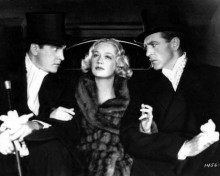
Of course, even for a film made before the production code of 1934, there’s no way the film is going to actually deal with the possibility of any physical relationship between the two men. Oh, there’s an undeniable homoerotic subtext and the film is knowing enough to hint where this is inevitably leading by the ending, but it was pushing things enough to have Gilda clearly sleeping with both men. Plus she chucks her husband (Edward Everett Horton)—whom she married only to get away from the other two and keep them from breaking up—to run off with both of them. That was pretty sophisticated in 1933. Come to think of it, it’s pretty sophisticated today.
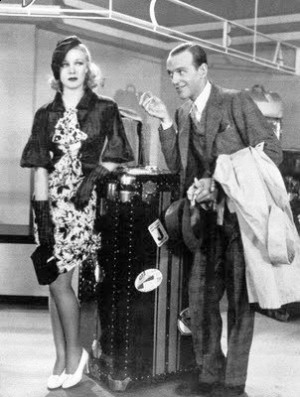
Then there’s the “Musical Romance.” There are scads of these, but I think I’d go with a Fred Astaire-Ginger Rogers picture for full value. And I think I’d opt for the first film that was actually designed as a vehicle for them—Mark Sandrich’s The Gay Divorcee (1934). Oh, I won’t deny that George Stevens’ Swing Time (1936) is a better film, and I know there are plenty who find Sandrich’s estimable Top Hat (1935) superior. But there’s a giddy freshness to The Gay Divorcee that they lack. The story’s no better than it has to be. Mimi Glossop (Rogers) and Guy Holden (Astaire) meet cute when her dithery Aunt Hortense (Alice Brady) closes Mimi’s dress in a steamer trunk at dockside. Naturally, he rips the dress trying to extricate it. He’s smitten, she’s not—or she pretends she’s not.
As it turns out, Mimi is need of a divorce and Hortense fixes her up with an old flame, Egbert “Pinky” Fitzgerald (Edward Everett Horton), for a lawyer. Egbert, of course, just happens to be Guy’s best friend ad takes Guy along to a seaside hotel where he’s arranged for Mimi to be “discovered” with a co-respondent, Rodolfo Tonetti (Erik Rhodes). Naturally, there’s a mix-up and Mimi thinks Guy is the paid faux adulterer. Awkward romance—but romance all the same—ensues, mostly because Guy completely seduces her by dancing with her to “Night and Day.” Only in the movies and only in romantic movies—and it works better if you’re Astaire and Rogers. In addition, you get a huge production number, “The Continental,” which lasts a whopping 17-plus minutes. No wonder it won the first Oscar for Best Song. It’s hard to remember anything else after that dose.
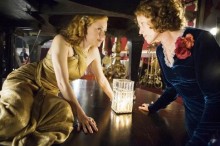
If, however, you want a “Modern Romantic Comedy,” there’s a variety of choices. I’d probably go with Bharat Nalluri’s Miss Pettigrew Lives for a Day (2008) with Frances McDorman, Amy Adams, Lee Pace, and Ciaran Hinds. I may be showing my “Classic Romatic Comedy” roots by picking a movie that’s set in the 1930s, but this is a very modern film in a lot of respects. Not only is Delysia Lafosse (Adams) a little on the really friendly side—she’s sleeping with three men and two of them are for mercenary reasons—but a large part of the film focuses on the middle-aged romance of Guinivere Pettigrew (Frances McDormand) and Joe Bloomfield (Ciaran Hinds). In “Classic Romantic Comedy,” Delysia would not be so biologically accomodating and the older couple would be strictly comedic.
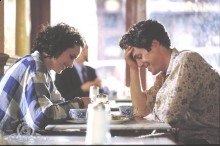
If you insist on something more modern in setting, how about Mike Newell’s Four Weddings and a Funeral (1994) with Hugh Grant and Andie MacDowell. It’s kind of hard to go wrong with the film’s cast and a screenplay by Richard Curtis, though I admit a preference for Curtis’ self-directed films. Considering his work on this, Notting Hill (1999), Bridget Jones’s Diary (2001), and Love Actually (2004), Curtis is perhaps the most accomplished romantic comedy specialist of our time. In fact, those other films wouldn’t be bad choices either. And sating they wouldn’t be bad choices is frankly understating the case.
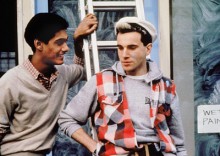
And, no, I’m not entirely overlooking the “Gay Romantic Film,” though these have a tendency to also be “Tragic Romances” (think Brokeback Mountain), but what about Stephen Frears’ My Beautiful Laundrette (1985) with Daniel Day Lewis and Gordon Warnecke as the romantic leads? Yes, there’s a lot more going on in this film than the romance. In fact, it takes a while for it to become clear that there is a romance, but once it does become clear, it moves to the center of the film. It’s also one of the most explicitly depicted in film—and guess what? They don’t come to a bad end.




There are two others I’d like to add:
La belle et la bête and King Kong.
There are two others I’d like to add:
La belle et la bête and King Kong.
I actually considered the former — not that this list is meant to be in any way comprehensive.
Possession(2002) with Jennifer Ehle is not bad fare either.
I’d put La belle et la bête over most all modern “romances” and thought there were some very romantic parts in GRAND HOTEL, with the scene between The Baron (John Barrymore) and Flaemmchen (Joan Crawford) as one of the best pick-up scenes of all time.
Possession(2002) with Jennifer Ehle is not bad fare either
I agree, though I don’t think of it so much as “with Jennifer Ehle.”
thought there were some very romantic parts in GRAND HOTEL, with the scene between The Baron (John Barrymore) and Flaemmchen (Joan Crawford) as one of the best pick-up scenes of all time.
I freely admit to being a sucker for the “Someone who could love you” scene he has with Garbo, too.
no matter what it’s title may imply, there is no way in hell that Blue Valentine is a good idea for this purpose. (I’m assuming you aren’t wanting to break up, mind you.)
It might be effective in the sense of ‘Well, compared to them, we aren’t doing so bad…’.
You’re kind of stiffed with Valentine’s Day choices here in Oz. There’s a Hong Kong remake of WHAT WOMENT WANT out…
Actually, I’d say go see TRUE GRIT. I may not feature a romance, but it’s plenty romantic.
Or just rent ACROSS THE UNIVERSE.
It might be effective in the sense of ‘Well, compared to them, we aren’t doing so bad
Much as I suggested that Biutiful might make you feel better about your own life.
Or just rent ACROSS THE UNIVERSE
I am not willing to believe you don’t own this.
I am not willing to believe you don’t own this.
This was advice for others, not necessarily my own plans, which mainly involve spending the day at work, then going home and editing my special features (that is not a euphemism).
I don’t think I’ve rented a film since I graduated from high school.
then going home and editing my special features (that is not a euphemism).
You have known me an awfully long time, haven’t you?
I agree, though I don’t think of it so much as “with Jennifer Ehle.”
Well, I threw in her name to distinguish the movie from the more recent movie of the same name which, well, sucked really really hard. I pity anyone who rents the wrong one.
In any case for Valentine’s Day my wife and I are more likely to watch The Abominable Dr Phibes. Love really is eternal. Especially when it’s soaked in formaldehyde.
Well, I threw in her name to distinguish the movie from the more recent movie
I guessed that, but Neil LaBute, Aaron Eckhart, or Gwyneth Paltrow wouldn’t have made me look it up to be sure.
Love really is eternal. Especially when it’s soaked in formaldehyde.
And love means never having to say you’re ugly.